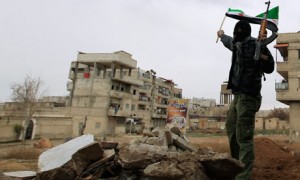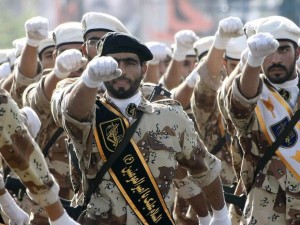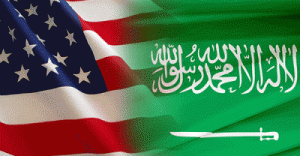 It’s been almost three months since Iran and Russia increased efforts to bolster the flagging troops of the Assad government – Russia with advisers and airpower, Iran with advisers and ground troops. Their aims are not precisely known but they likely want either to decisively defeat the rebels, or more likely, to deliver a punishing blow, disabusing the rebels of any thought of victory and forcing them to negotiate, with them.
It’s been almost three months since Iran and Russia increased efforts to bolster the flagging troops of the Assad government – Russia with advisers and airpower, Iran with advisers and ground troops. Their aims are not precisely known but they likely want either to decisively defeat the rebels, or more likely, to deliver a punishing blow, disabusing the rebels of any thought of victory and forcing them to negotiate, with them.
Whatever the aims of Tehran and Moscow, their efforts have not met with great success. Gains around Homs in the south and Aleppo up north have been limited and offset by losses elsewhere. The two powers are becoming ensnarled in a war they cannot win. Nor can they control its escalation.
Russian airpower
 Russian air units are well equipped and well trained, though not as experienced in tactical air support as, say, the US. Effective tactical airstrikes require a great deal of coordination between ground forces and pilots. Otherwise, ordnance will not be delivered accurately. Collateral damage will be greater. Targeted forces will experience fearsome concussive blasts, but not great casualties. Rebel troops at this point are probably adept at digging in.
Russian air units are well equipped and well trained, though not as experienced in tactical air support as, say, the US. Effective tactical airstrikes require a great deal of coordination between ground forces and pilots. Otherwise, ordnance will not be delivered accurately. Collateral damage will be greater. Targeted forces will experience fearsome concussive blasts, but not great casualties. Rebel troops at this point are probably adept at digging in.
Foreign backers have thus far been reluctant to deliver Manpads to the rebels. Saudi Arabia reportedly promised last year to deliver Chinese FN-6 missiles, but nothing has come of it. Russian SA-18s fell into rebel hands after government arsenals fell, however only a handful of Syrian helicopters have been brought down by them.
Manpads, in any case, are not the devastating weapons often claimed. When Afghan guerrilla forces were armed with US Stingers in the mid-80s, Russian pilots compensated by operating at higher altitudes, which reduces bombing accuracy, and reducing time over target. A Pentagon study conducted after the war found no evidence that Stingers caused significantly higher Russian aircraft losses.
Iranian troops
 Numbers are uncertain but Iran probably has approximately a thousand Revolutionary Guard (IRGC) ground troops in Syria. Though Iran claims to have only advisers in country, its media reported 67 battle deaths in recent months, including several colonels and generals.
Numbers are uncertain but Iran probably has approximately a thousand Revolutionary Guard (IRGC) ground troops in Syria. Though Iran claims to have only advisers in country, its media reported 67 battle deaths in recent months, including several colonels and generals.
This is far too many to be from training missions alone, no matter how close they are to front lines. The number of wounded is likely to be at least four times that, making for remarkably high losses.
The heralded IRGC troops have not made a difference, despite high casualties. Whether due to inexperience, zealous officers, or overconfidence, the troops have yet to demonstrate the effectiveness the IRGC is thought to have acquired from Russian trainers over the years.
Tehran must be concerned and may consider sending more ground troops. Moscow may be similarly tempted, though Afghanistan is not far from mind there. Sunni foes would welcome escalation and swiftly respond – not with troops, of course, rather with more lethal weapons to rebels.
Escalating rebel strength
 Only days after the Iranian-Russian offensive began, rebel forces received a well-publicized influx of supplies from the US and Saudi Arabia. The US also upped the number of trainers in Syria, though they will not be near the fighting. The move was symbolic and will have no effect on rebel combat effectiveness.
Only days after the Iranian-Russian offensive began, rebel forces received a well-publicized influx of supplies from the US and Saudi Arabia. The US also upped the number of trainers in Syria, though they will not be near the fighting. The move was symbolic and will have no effect on rebel combat effectiveness.
The Syrian civil war is paralleling the dynamics of the Cold War, especially in Afghanistan where the US repeatedly increased the quantity and quality of mujahideen arms. The dynamics today are greatly strengthened by sectarian animosities, irrelevant to Washington and Moscow, crucial to Riyadh and Tehran. The presence of Iranian forces may have increased the resolve of Sunni rebels as they can now engage troops they deem heretical minions of Persia.
Riyadh and Washington want to punish Iran and Russia. Riyadh may be inclined to put off meaningful negotiations, preferring instead to see their Russian-Shia enemies expend limited resources in an unwinnable war and suffer more casualties in months to come. The Americans will be risking very few troops, the Saudis none.
©2015 Brian M Downing